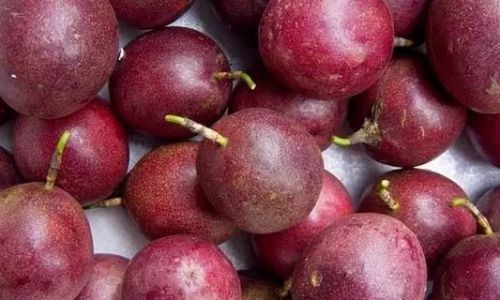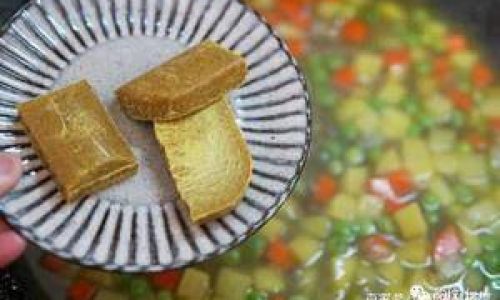Table of content
- A. Honey or Agave Drizzle
- B. Brown Sugar or Coconut Sugar Sprinkle
- C. Condensed Milk or Cream
- A. Tropical Smoothie Bowl
- B. Pineapple-Passion Fruit Salad
- A. Passion Fruit Lemonade
- B. Creamy Passion Fruit Mocktail
- A. Passion Fruit Sorbet
- B. Passion Fruit Pavlova
- A. Passion Fruit Curd
- B. Spicy Passion Fruit Glaze
- A. Passion Fruit Ceviche
- B. Tropical Salsa
Passion fruit, with its vibrant purple or golden exterior and jelly-like interior, is a tropical delight celebrated for its unique flavor profile. However, its natural tartness can sometimes overpower its sweetness, leaving many to wonder how to enjoy this exotic fruit without puckering their lips. If you’ve ever bit into a passion fruit and winced at its sharp acidity, fear not—this article explores creative, delicious, and practical methods to transform sour passion fruit into a culinary masterpiece. From simple sweetening tricks to gourmet recipes, we’ll dive into how to balance its tanginess and unlock its full potential.
Understanding Passion Fruit’s Natural Acidity
Before diving into solutions, it’s essential to grasp why passion fruit tastes sour. The fruit’s tartness comes from its high concentration of citric acid, a compound found in many citrus fruits. This acidity is natural and varies depending on the variety and ripeness of the fruit. Underripe passion fruits tend to be more acidic, while fully ripe ones offer a sweeter, more balanced flavor. However, even ripe passion fruits retain a tangy kick, which is part of their charm. The key lies in harmonizing this acidity with complementary flavors and textures.
Sweeten It Naturally: Simple Additions for Instant Relief
The quickest way to temper passion fruit’s sourness is by introducing sweetness. Here’s how:
A. Honey or Agave Drizzle
- Method: Slice the passion fruit in half, scoop out the pulp, and drizzle 1–2 teaspoons of honey or agave nectar over it. Mix gently.
- Why It Works: Natural sweeteners like honey and agave add floral or caramel-like notes that mellow the fruit’s acidity without overwhelming its taste.
B. Brown Sugar or Coconut Sugar Sprinkle
- Method: Sprinkle a teaspoon of brown sugar or coconut sugar over the pulp and let it sit for 5 minutes to melt slightly.
- Why It Works: These sugars have deeper, molasses-like flavors that pair beautifully with tropical fruits, creating a caramelized effect.
C. Condensed Milk or Cream
- Method: Add a spoonful of sweetened condensed milk or heavy cream to the pulp and stir.
- Why It Works: Dairy’s richness cuts through acidity, while the sugar in condensed milk adds sweetness. This method is popular in Southeast Asian desserts.
Blend It with Sweeter Fruits
Combining passion fruit with naturally sweeter fruits can create a harmonious flavor balance. Try these combinations:
A. Tropical Smoothie Bowl
- Ingredients: 1 ripe banana, ½ cup mango chunks, ½ cup passion fruit pulp, ½ cup coconut water, ½ cup yogurt.
- Method: Blend until smooth, top with granola and shredded coconut.
- Why It Works: Banana and mango’s natural sweetness counteracts the tartness, while coconut water enhances the tropical theme.
B. Pineapple-Passion Fruit Salad
- Method: Mix diced pineapple, passion fruit pulp, and a splash of orange juice. Let it chill for 30 minutes.
- Why It Works: Pineapple’s enzymatic properties (bromelain) break down proteins, softening the fruit’s texture and mellowing acidity.
Transform It into Refreshing Beverages
Passion fruit’s tanginess shines in drinks, especially when diluted or paired with complementary flavors.

A. Passion Fruit Lemonade
- Recipe:
- Juice of 4 lemons.
- ½ cup passion fruit pulp.
- ½ cup sugar (adjust to taste).
- 4 cups water.
- Ice and mint for serving.
- Method: Stir sugar into ½ cup hot water until dissolved. Mix with lemon juice, passion fruit, and cold water. Serve over ice.
- Why It Works: Lemon’s acidity complements passion fruit, while sugar balances the duo.
B. Creamy Passion Fruit Mocktail
- Recipe:
- ¼ cup passion fruit pulp.
- 2 tbsp honey.
- ½ cup coconut milk.
- ½ cup sparkling water.
- Method: Blend pulp, honey, and coconut milk until frothy. Top with sparkling water and a lime wedge.
- Why It Works: Coconut milk’s creaminess softens the tartness, while sparkling water adds effervescence.
Elevate Desserts with Passion Fruit
From frozen treats to baked goods, passion fruit adds a zesty twist to sweets.
A. Passion Fruit Sorbet
- Recipe:
- 1 cup passion fruit pulp.
- 1 cup simple syrup (1:1 sugar and water).
- 1 tbsp lime juice.
- Method: Freeze in an ice cream maker or shallow tray, stirring every 30 minutes until firm.
- Why It Works: Freezing mutes acidity slightly, while simple syrup ensures sweetness.
B. Passion Fruit Pavlova
- Method: Top a crisp meringue base with whipped cream, passion fruit pulp, and fresh berries.
- Why It Works: The meringue’s sweetness and the cream’s richness create a contrast with the fruit’s tartness.
Cook It into Sauces and Jams
Heat transforms passion fruit’s acidity, making it ideal for preserves and sauces.
A. Passion Fruit Curd
- Recipe:
- ½ cup passion fruit juice.
- ½ cup sugar.
- 4 egg yolks.
- ½ cup unsalted butter.
- Method: Whisk ingredients in a saucepan over low heat until thickened. Strain and chill.
- Why It Works: Cooking reduces acidity, while butter adds richness.
B. Spicy Passion Fruit Glaze
- Method: Simmer passion fruit pulp with honey, chili flakes, and soy sauce. Brush over grilled chicken or tofu.
- Why It Works: Heat mellows acidity, and spices add complexity.
Incorporate It into Savory Dishes
Passion fruit’s acidity can elevate savory dishes, acting as a natural tenderizer or flavor enhancer.

A. Passion Fruit Ceviche
- Method: Marinate raw fish or shrimp in passion fruit juice, lime, cilantro, and red onion for 20 minutes.
- Why It Works: The acid “cooks” the seafood while adding brightness.
B. Tropical Salsa
- Mix: Diced mango, red pepper, passion fruit pulp, cilantro, and a pinch of salt. Serve with tortilla chips.
- Why It Works: The salsa’s sweet-and-spicy profile balances the fruit’s tartness.
Freeze It for Later Use
If your passion fruit is too sour to eat immediately, freeze the pulp for future use.
- Method: Scoop pulp into ice cube trays, add a teaspoon of honey or sugar to each, and freeze.
- Uses: Thaw cubes for smoothies, cocktails, or desserts.
Pair It with Dairy
Dairy’s fat content neutralizes acidity. Try these pairings:
- Yogurt Parfait: Layer Greek yogurt, passion fruit pulp, and granola.
- Passion Fruit Panna Cotta: Infuse cream with passion fruit juice before setting with gelatin.
Experiment with Fermentation
Fermenting passion fruit can reduce acidity while adding probiotic benefits.

- Method: Mix pulp with sugar, water, and a pinch of salt. Ferment in a jar for 3–5 days, burping daily.
- Result: A tangy-sweet syrup for cocktails or dressings.
Tips for Selecting and Ripening Passion Fruit
Prevention is key to minimizing sourness:
- Choose Ripe Fruit: Look for wrinkled, heavy fruits with deep color. Avoid shiny, hard ones.
- Ripen at Home: Place unripe passion fruit in a paper bag with a banana to speed up ripening.
Conclusion
Passion fruit’s sourness is not a flaw but a canvas for culinary creativity. By sweetening, blending, cooking, or pairing it with complementary ingredients, you can turn even the tangiest fruit into a versatile delight. Whether you’re whipping up a refreshing mocktail, a decadent dessert, or a savory glaze, passion fruit’s vibrant flavor will shine—no puckered lips required. So next time you encounter a sour passion fruit, embrace the challenge and let your taste buds embark on a flavorful adventure.





0 comments